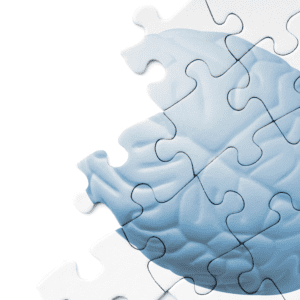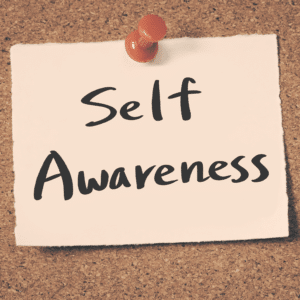Pengantar
When it comes to teaching and learning, technology plays an important role. It has the potential to make classrooms more engaging for students, improve their understanding of content, and make teachers’ jobs easier. The following sections provide examples of how this is happening in classrooms across America:
Technology is changing the way students learn.
Technology is changing the way students learn. It can be used to personalize learning, make the classroom more engaging for students, and even help them understand content more deeply than traditional materials do.
One of the most exciting ways technology is helping students learn is through personalization. Personalized learning means that each student receives instruction based on his or her own needs and abilities, which allows teachers to tailor their lessons accordingly. Teachers have access to data about each student’s progress so they can tailor lessons accordingly–for example, if a certain lesson isn’t working for one particular student in class because he doesn’t understand it well enough yet (or at all), then maybe another lesson would work better at this point in time instead of having him sit there frustrated while everyone else moves on without him!
Digital learning tools and resources expand the classroom.
Digital learning tools and resources expand the classroom. In a traditional classroom, students are required to follow along with their teachers and learn at a pre-determined pace. With technology, however, you can allow your students more freedom in how they access and use information from your course materials. This means that each student can learn at their own pace, regardless of whether they are working on their own or with other students around the world.
In addition to allowing for greater flexibility in terms of time management (e.g., allowing students who have busy schedules) these digital tools also provide an opportunity for self-guided learning which enables them to take ownership over their education by making decisions about what works best for them as learners
Technology can make the classroom more engaging for students.
Technology can make the classroom more engaging for students.
- Students are able to stay focused on the lesson and not be distracted by other things in their environment, like cell phones or other people who may be talking.
- Technology allows for students to learn more effectively because it allows them to get the information faster than if they were reading from a book or listening from someone else’s lecture. This is especially helpful with younger students who have trouble sitting still for long periods of time without getting distracted by something else happening around them (like another student talking).
- Technology makes learning more engaging by providing visual representations of topics being discussed so that they can see what they’re learning about rather than just reading words on paper or hearing them spoken aloud by someone else (the teacher). For example: If you were studying plants in biology class, instead of just reading about how different types look like and where they grow best–you could actually see pictures of every type alongside their descriptions!
The use of tech has led to increased participation by students in the classroom.
In a recent survey of teachers, it was found that those who used technology in their classrooms reported higher levels of student engagement than those who didn’t. Students are more likely to participate in class when they can use technology like tablets, laptops and cell phones. They’re also more likely to complete assignments on time because these devices allow them to take notes during lectures or stay up-to-date on what’s going on around them outside of school hours. And if you have ever been taught by an enthusiastic teacher who uses multimedia tools in their lesson plans (like quizzes), then you know how much easier it makes learning new material!
Technology can be used to personalize learning for students.
Technology can be used to personalize learning for students. Students are no longer limited by their physical location or the time of day, and they can access online resources whenever they want. This allows them to learn at their own pace, which is an important factor in student success.
Technology also helps create an interactive classroom experience where students learn about new topics in an engaging way. For example, when using technology like virtual reality (VR), augmented reality (AR) or 3D modeling software you will find that your students become more engaged because they are able to interact with their environment while learning about something new!
New technology can make data collection easier for teachers and administrators.
Technology can make it easier for teachers to collect data on student performance and keep better records of student performance. In addition, technology can help teachers collect data on student behavior and attendance.
Technology helps students understand content more deeply than traditional materials do.
Technology can help students learn more effectively. Technology has the potential to enhance student learning by enabling them to interact with content in new ways, and by providing opportunities for practice that is more engaging than traditional materials. For example, digital textbooks allow students to review key concepts and terms through interactive videos, animations and 3D models. They also provide multiple choice questions at the end of each chapter so students can test their understanding before moving on. This supports deeper understanding as well as retention of what was learned earlier in the text (Gardner & Clarke 2013).
In addition, technology allows you greater flexibility when designing instruction because it offers a range of methods for presenting information including auditory presentations such as podcasts or videos; visual presentations such as PowerPoint slideshows; interactive games or simulations; activities involving movement like virtual reality games where users physically move around an environment while wearing special goggles connected wirelessly via Bluetooth technology which display images generated by computer graphics cards installed inside personal computers called GPUs -Graphical Processing Units
Technology plays an important role in how teachers teach, how students learn, and how schools are run.
Technology is a tool, not a solution. It can help teachers, students and schools by making things easier for them. But it is not a panacea that will solve all our problems just because we have new technology available to us.
Technology can make your job as an educator easier by providing access to resources that were previously difficult or impossible to obtain — especially in rural areas where there may be no library nearby. For example:
- You might use Google Drive to share documents with your students so they don’t have to print out everything themselves (saving paper). This allows everyone in the class access at any time without having physical copies lying around!
- You could use Skype as an alternative form of communication while still being face-to-face with each other if one person lives far away from another member of their family/group/etcetera; this way they’ll feel more connected even though they aren’t physically present together at once place (which would normally be necessary).
Kesimpulan
Technology is an important part of how we learn, and it can help students learn more effectively than they would without it. Technology makes it possible for teachers to personalize their lessons for each student and track progress more easily. Students can use digital tools like Khan Academy or Edmodo to expand their knowledge beyond the classroom walls–giving them access to resources that would otherwise be unavailable or cost-prohibitive. New technologies like virtual reality simulations provide immersive experiences that allow students to practice skills like communication or problem solving in realistic situations before trying them out in real life situations









